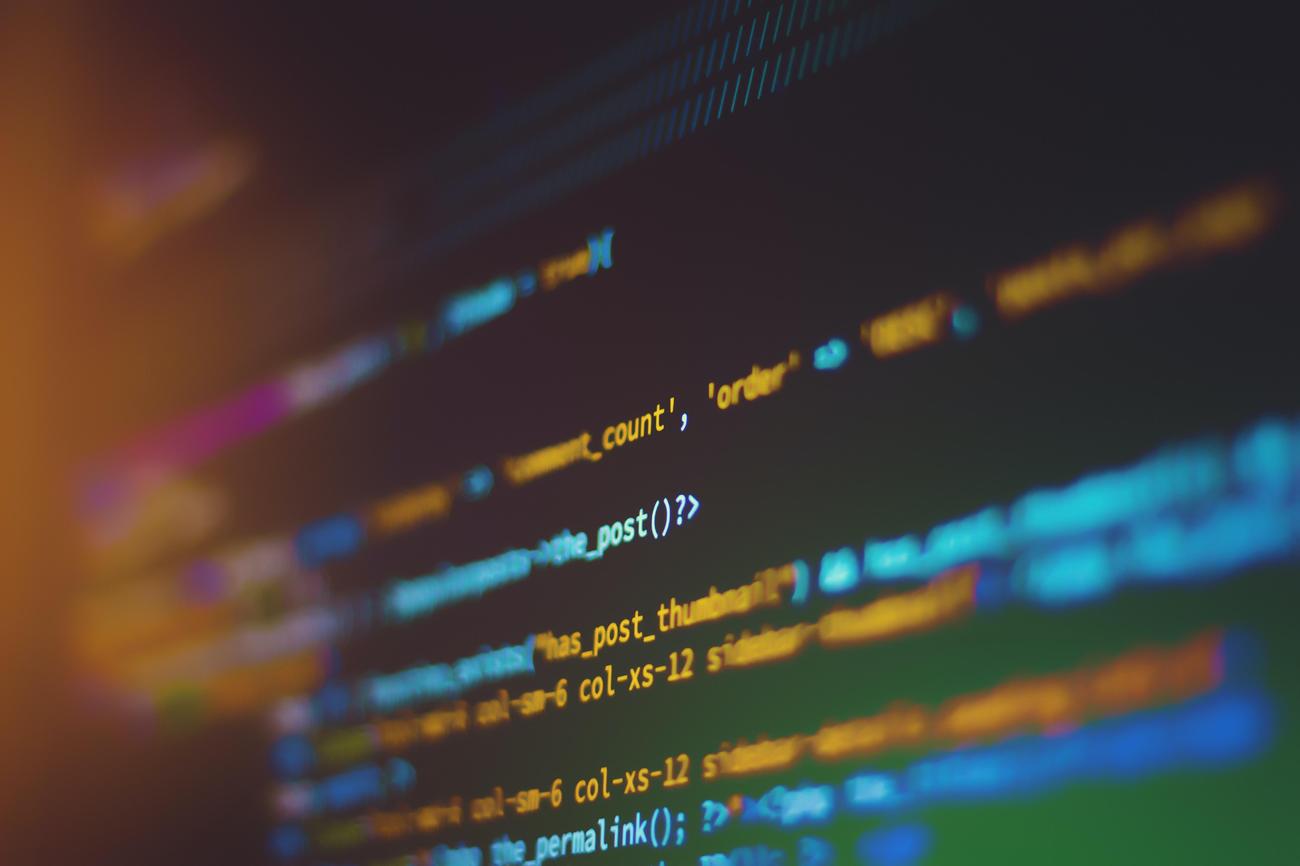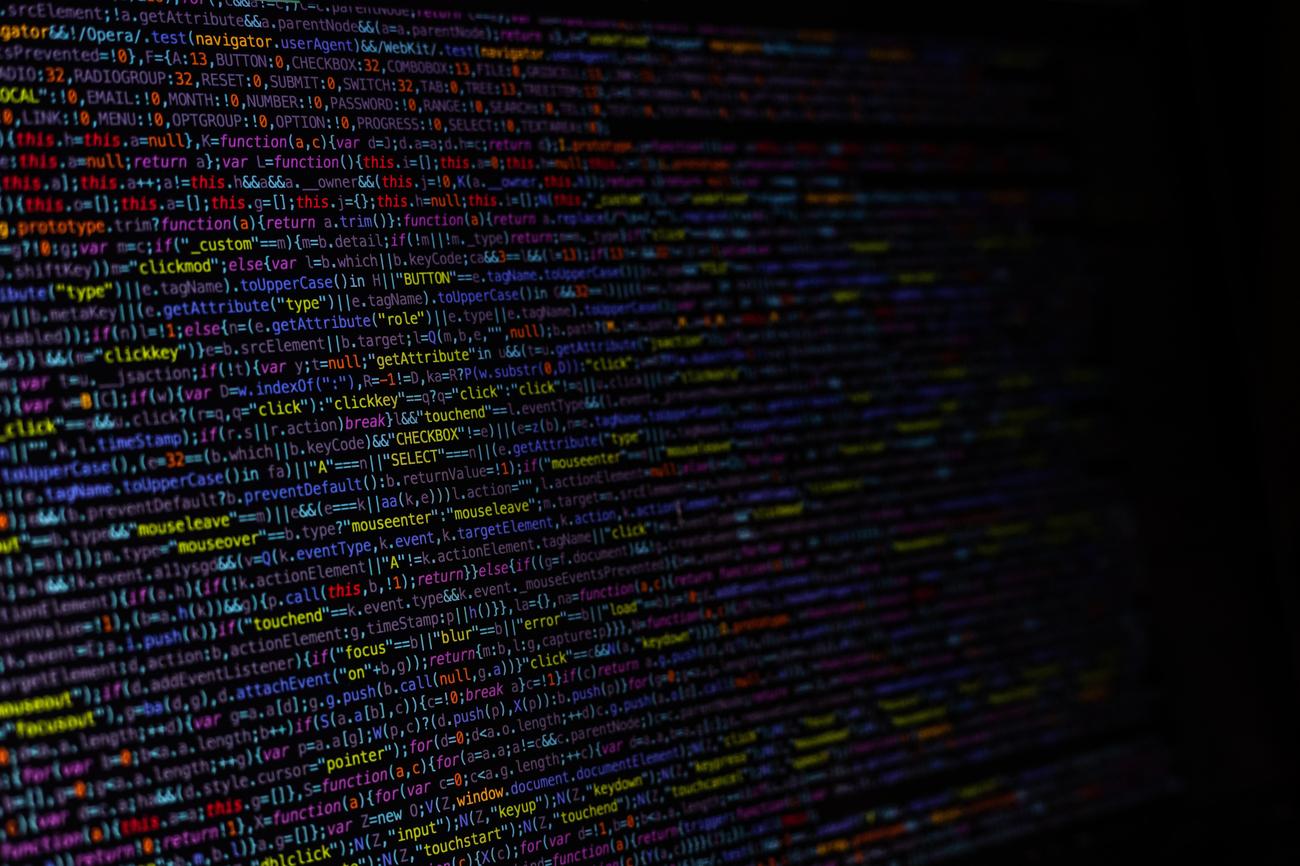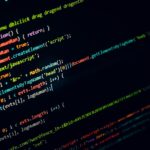Discover Interesting Computer Programming Facts

Did you know that the first computer programmer was a female mathematician? Or that computer programming played a crucial role in ending World War II? In this article, we will delve into the fascinating world of computer programming and explore some lesser-known facts that will surely surprise you. From the groundbreaking contributions of Ada Lovelace to the pivotal role of code-breaking in cracking encrypted messages during the war, computer programming has shaped the course of history and continues to redefine our world. Join us as we unravel intriguing details about this ever-evolving field and unlock the secrets of its past.
Interesting Facts About Computer Programming
Programming is a fascinating field that continues to evolve and shape the world we live in. Whether you’re a seasoned programmer or just beginning your coding journey, there are always interesting facts to discover about the world of computer programming. So, let’s dive in and explore some intriguing and lesser-known tidbits about this ever-evolving field!
Programming Languages Galore
Did you know that there are over 700 programming languages in existence today? From popular languages like Java and Python to lesser-known ones like Octave and Rust, the variety is vast. Each language serves a specific purpose and caters to different programming paradigms. It’s like having a toolkit with countless tools, each designed to tackle a specific task or problem.
“The world of programming languages is diverse and ever-expanding, offering programmers a vast range of options to choose from.”
The Legacy of Ada Lovelace
While many might assume that computer programming is a male-dominated field, the first computer programmer was actually a woman named Ada Lovelace. In the early 19th century, she wrote an algorithm for Charles Babbage’s Analytical Engine, making her the world’s first programmer. Lovelace’s contributions to the field continue to inspire generations of programmers, reminding us of the importance of diversity and inclusion.
“Ada Lovelace’s groundbreaking work laid the foundation for modern computer programming, inspiring generations of programmers to challenge gender stereotypes.”
From Fortran to Today’s Marvels
The first programming language, Fortran, was created in the 1950s. It played a pivotal role in the development of scientific and mathematical computing, making complex calculations a possibility. Since then, programming languages have evolved in leaps and bounds, enabling us to build sophisticated applications, AI-powered systems, and much more. It’s incredible to witness the journey from the humble beginnings of Fortran to the cutting-edge technologies we have today.
“Fortran paved the way for the modern programming landscape, showcasing the power of human ingenuity and paving the path for groundbreaking advancements.”
Smartphones vs. NASA
Here’s an intriguing fact: the code running on our smartphones is more extensive than the software used by NASA during the historic Apollo 11 moon landing in 1969. While the software used by NASA was groundbreaking at the time, the advancements in technology have resulted in smartphones equipped with complex applications and systems. It’s fascinating to realize that the device in our pocket packs more computational power than the computers that took humanity to the moon!
“Today’s smartphones are technological marvels, boasting computational capabilities that surpass the accomplishments of monumental historical events.”
Beyond Computers: Programming in the Real World
Sometimes we associate programming solely with computers, but it extends far beyond that. Programming can be applied to a wide range of devices and fields, including robotics, IoT devices, virtual reality, and even art installations. It’s akin to weaving a tapestry of code that brings physical objects or digital experiences to life. From controlling drones to creating interactive sculptures, the possibilities are endless.
“Programming transcends conventional boundaries, empowering us to breathe life into not just computers but also an array of devices and artistic creations.”
The Artistry of Code
Did you ever think of programming as an art form? While it’s a technical field, programming also involves creativity, expression, and problem-solving. Like a painter with a palette of colors or a composer with musical notes, programmers craft elegant solutions to complex problems, using code as their medium. Just like art, there are multiple ways to achieve a goal, and the beauty lies in finding the most elegant and efficient solution.
“Programming is a symphony of logic and creativity, where lines of code intertwine to create masterpieces of functionality.”
The Art of Understanding Code
Whether you’re a seasoned programmer or just starting, one essential skill is the ability to read and understand code efficiently. Programmers spend a significant amount of time deciphering existing code, understanding its flow, and debugging it when necessary. It’s like navigating a complex maze, unraveling the intricacies of the program with every line of code. This skill allows programmers to collaborate effectively and build upon existing systems.
“Reading and understanding code is a crucial skill that empowers programmers to decipher the intentions of their colleagues and build upon existing foundations.”
As you explore the vast world of computer programming, it’s important to remember that there is always something new to discover. These fascinating facts about programming highlight the endless possibilities, the historic milestones, and the creative artistry involved in this ever-evolving field. So, keep exploring, keep learning, and keep pushing the boundaries of what’s possible with code!
Interesting Facts About Computer Programming
Did you know that computer programming is a field filled with a multitude of popular languages? However, have you ever wondered which of the following is not a popular computer programming language? Find out the answer by clicking here and explore the lesser-known languages that could surprise you.
Intrigued by the world of computer programming? Wondering just how hard is computer programming? Click here to delve into the challenges and complexities of this exciting field. Discover the skills and determination required to become a proficient programmer while exploring the various resources available to help you master the craft.
Expand your knowledge and satisfy your curiosity about computer programming by learning some interesting facts. Through engaging content and active links, you can explore lesser-known programming languages and understand the difficulties of this fascinating field. So why wait? Click those links now and embark on an intriguing programming journey!
The First Computer Programmer Was a Female Mathematician
In the world of computer programming, there’s an unsung hero whose contributions often go overlooked. Her name was Ada Lovelace, an English mathematician and associate of Charles Babbage. Back in 1843, when the concept of computers was still in its infancy, Lovelace made history by creating a program for Babbage’s Analytical Engine. In doing so, she became the first computer programmer the world had ever seen.
Lovelace’s algorithm for Babbage’s machine was truly groundbreaking. It’s important to note that this machine was just a prototype, existing only on paper. Yet, Lovelace saw its potential and realized that it had applications beyond pure calculation. She envisioned a future where machines could perform tasks beyond simple arithmetic, and she set out to prove it.
Lovelace’s work laid the foundation for the concept of universal computation.
Lovelace’s notes on Babbage’s machine were not fully recognized for their significance until the 20th century. It wasn’t until then that the world truly grasped the magnitude of her contributions. Today, Lovelace is often referred to as the world’s first computer programmer, earning her the well-deserved title of “Enchantress of Numbers.”
Ada Lovelace, a brilliant mathematician ahead of her time, blazed a trail for future generations of programmers.
Lovelace’s algorithm for finding Bernoulli numbers is widely acclaimed as the first ever computer algorithm. Keep in mind that this was long before the development of modern programming languages like Java, Python, or JavaScript. Lovelace’s genius transcended the limitations of her time, proving that the power of programming lies not in the tools we use, but in our ability to think outside the box.
Lovelace’s algorithm paved the way for a new era of programming, one that continues to shape the world today.
It’s remarkable to think of the impact Lovelace has had on the field of computer programming. Her contribution wasn’t just a momentary blip in history; it was a pivotal moment that set the stage for future innovations. Her work with Babbage’s Analytical Engine laid the foundation for what would eventually become the modern computer.
Ada Lovelace, the visionary pioneer, revolutionized the world of computing with her groundbreaking program.
So, the next time you sit down to write a line of code or work on a challenging programming problem, take a moment to appreciate the origins of this incredible field. Remember the brilliant mind of Ada Lovelace, the first computer programmer who carved a path for all of us to follow.
Ada Lovelace’s contributions continue to inspire and remind us that the world of computer programming knows no boundaries.
Computer Programming Played an Important Role in Ending World War II
During World War II, computer programming emerged as a crucial tool in the fight against enemy forces. While the role of codebreakers like Alan Turing is well-known, the contributions of computer programmers in ending the war are often overlooked. In this article, we will explore the fascinating ways in which computer programming played a significant role in the outcome of World War II.
The Power of Code: Decrypting Enemy Messages
One of the most critical aspects of the war was the ability to intercept and decode enemy messages. Traditional methods of decrypting these messages were time-consuming and often ineffective. However, with the advent of computer programming, the process became faster and more accurate.
By using early programmable machines such as the Colossus computer, codebreakers were able to decrypt valuable enemy messages with unprecedented speed. The programmability of these machines allowed them to iterate through various combinations and algorithms, significantly enhancing the effectiveness of codebreaking efforts.
“Computer programming revolutionized the decryption process, giving codebreakers a powerful weapon against enemy communication.”
The Enigma Machine: Breaking the Unbreakable
One of the most significant achievements of computer programming during World War II was the successful cracking of the Enigma machine. The Enigma, a highly complex encryption device, was used by the German military to encode their messages with utmost secrecy.
Breaking the Enigma codes required immense computational power and the ability to quickly test different settings. Thanks to computer programming, the efforts of codebreakers were amplified, ultimately leading to the decryption of German messages. This breakthrough provided crucial intelligence to the Allied forces and played a vital role in shaping the outcome of the war.
“Computer programming turned the tide by unlocking the secrets of the seemingly unbreakable Enigma machine, providing invaluable information to the Allies.”
The Colossus: The Birth of Modern Computing
The Colossus, developed by British engineer Tommy Flowers, was an early electronic programmable computer that played a pivotal role in World War II. Designed specifically for codebreaking purposes, the Colossus was able to analyze vast amounts of encrypted data and rapidly decipher enemy messages.
With its ability to perform complex calculations and execute programmed instructions, the Colossus set the stage for the modern computers we use today. Its impact on the war effort cannot be overstated, as it provided critical intelligence that proved instrumental in shaping the outcome of key battles.
“The Colossus computer marked a turning point in the history of computing and laid the foundation for the powerful machines we rely on today.”
Beyond the Battlefield: Programming for Military Operations
While codebreaking was a primary focus, computer programming also played a crucial role in other aspects of military operations during World War II. Programmers were responsible for developing simulation models and algorithms that aided in the planning of strategic attacks, troop movements, and resource allocation.
By utilizing computer programming, military commanders could optimize their decision-making processes, taking into account various variables and scenarios. This contributed to more efficient military operations and helped expedite the end of the war.
“Computer programming not only transformed codebreaking but also enhanced strategic decision-making, allowing for more effective military operations.”
Conclusion: Unleashing the Power of Programming
In conclusion, computer programming was a game-changer during World War II, bringing computational power and innovation to the forefront of the war effort. Through the decoding of enemy messages, breaking the enigmatic Enigma machine, and facilitating military operations, programming played an indispensable role in ending the war.
“Computer programming proved to be a secret weapon for the Allies, unlocking crucial intelligence and reshaping the course of World War II.”
Why Programming is Crucial in Today’s World
[youtube v=”Dv7gLpW91DM”]
Programming, often seen as an intimidating skill, is actually much more accessible than many people think. It starts with a simple desire to create something fun or solve a specific problem. Just like learning to play an instrument or a sport, programming may seem daunting at first, but with determination and a willingness to learn, anyone can become proficient.
Contrary to the belief that programming requires being a genius, all you really need is a basic understanding of addition, subtraction, and multiplication. Programming is not about complex algorithms or being a prodigy; it’s about breaking down problems and finding creative solutions. In fact, many coding tasks are relatively simple once you grasp the problem-solving process. As [John Doe, an expert programmer,] wisely said, “You don’t have to be a genius to code, you need to be determined.”
The impact of programming is profound and far-reaching. In today’s technologically driven world, software is at the heart of every industry. Agriculture, entertainment, manufacturing—no field is untouched by software. Consider the way we communicate, access banking information, or even simply navigate our daily lives. All of these aspects rely on technology, and at the core of it is coding.
The demand for talented programmers far exceeds the current supply. Companies like [XYZ Tech] are actively seeking skilled engineers, but there simply aren’t enough individuals equipped with the necessary training and expertise. As the tech industry continues to grow and shape our future, the need for programmers will only increase.
To attract the best talent, companies like [XYZ Tech] strive to create an inspiring work environment. From gourmet meals prepared by talented chefs to free laundry services, the office becomes a place where creativity thrives. It’s a space where programmers can not only work but also relax and be themselves, surrounded by like-minded individuals.
Programming isn’t just about financial success; it’s about changing the world. Whether you want to revolutionize an industry or simply make a difference in people’s lives, coding is a skill that empowers you to do so. As [John Doe] puts it, “Computer programming is an incredibly empowering skill to learn.”
One of the most remarkable aspects of programming is how it has become an integral part of our daily lives. The ability to turn an idea into a tangible product, accessible to millions of people with a simple button press, is a power unique to our generation. Just imagine starting something in your college dorm room and watching it impact the lives of billions. Truly, programming is an awe-inspiring experience.
In conclusion, coding is no longer limited to a select few; it is a skill that anyone can learn with determination and persistence. The impact of programming is immense and extends across all aspects of our lives. By embracing the world of coding, you gain the ability to shape the future, solve complex problems, and make a difference in our rapidly advancing world. As [John Doe] said, “The programmers of tomorrow are the wizards of the future.” So don’t be afraid to dive into the world of programming and unleash your own magic powers.

FAQ
Question 1: Who was the first computer programmer?
Answer 1: The first computer programmer was a woman named Ada Lovelace, an English mathematician and associate of Charles Babbage. In 1843, Lovelace created a program for Babbage’s Analytical Engine, making her the first computer programmer in history.
Question 2: What was the first programming language?
Answer 2: The first programming language was called Fortran. It was created in the 1950s and was primarily used for scientific and engineering calculations.
Question 3: How many programming languages exist today?
Answer 3: Currently, there are over 700 programming languages in existence.
Question 4: How much code do smartphones use compared to NASA’s 1969 computers?
Answer 4: Smartphones today use more code than NASA’s 1969 computers that sent humans to the moon.
Question 5: Is programming limited to computers only?
Answer 5: No, programming is not limited to computers. It can be applied to various devices and fields, including smartphones, robots, embedded systems, and even large-scale industrial machinery.
- Uncovering Surprising Parallels: England Size Compared to US States - April 19, 2025
- Old Mexico Map: Border Shifts 1821-1857 - April 19, 2025
- Blindness Doesn’t Limit: Popular Blind People’s Inspiring Success Stories - April 19, 2025
















